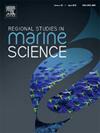Remote sensing and numerical modeling to assess the drought in Ichkeul Lake, a RAMSAR wetland and UNESCO biosphere reserve, under climate change
IF 2.1
4区 环境科学与生态学
Q3 ECOLOGY
引用次数: 0
Abstract
This research focuses on assessing the impact of climate change on the functioning of Lake Ichkeul, a RAMSAR wetland and UNESCO biosphere reserve in the southwestern Mediterranean region. The study investigates the impact of lagoon exchange through the Tinja channel, including the influence of tides, as well as the effects of river inflows and precipitation in controlling salinity and preventing drought occurrences in Ichkeul Lake using a numerical approach. Regarding the remote sensing analysis, findings show that the water body area of Ichkeul Lake has experienced a marked decline over recent years. Specifically, the area decreased from 31.4 km2 in 2016 to 29.7 km2 in 2022, highlighting ongoing environmental changes. A broader analysis spanning from 2000–2022 reveals a dramatic reduction, with the water body shrinking from 72.33 km2 in 2000 to 29.7 km2 in 2022, amounting to a substantial loss of 42.63 km² over two decades. As for the results of the numerical model, the results highlight the importance of tides in controlling the waterflow and salt into the lake. The flow of water exchanged across this communication ranges from −0.2 mm/day to + 0.2 mm/day, exhibiting variations corresponding to the different seasons. Furthermore, the simulations demonstrate the consequences of the closure of the Tinja channel. The numerical experiment shows that after 560 days of “isolation”, the Ichkeul lake experienced a total drought. The research findings underscore the critical significance of maintaining lagoon connectivity through the Tinja channel, considering both river input and tidal influence, to control salinity levels and prevent drought events in the Ichkeul Lake.
求助全文
约1分钟内获得全文
求助全文
来源期刊

Regional Studies in Marine Science
Agricultural and Biological Sciences-Ecology, Evolution, Behavior and Systematics
CiteScore
3.90
自引率
4.80%
发文量
336
审稿时长
69 days
期刊介绍:
REGIONAL STUDIES IN MARINE SCIENCE will publish scientifically sound papers on regional aspects of maritime and marine resources in estuaries, coastal zones, continental shelf, the seas and oceans.
 求助内容:
求助内容: 应助结果提醒方式:
应助结果提醒方式:


